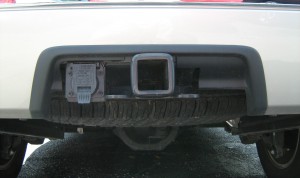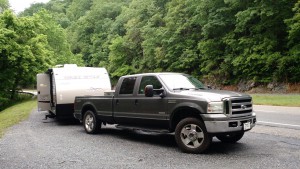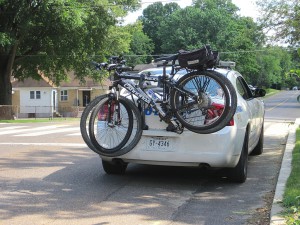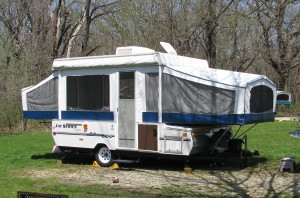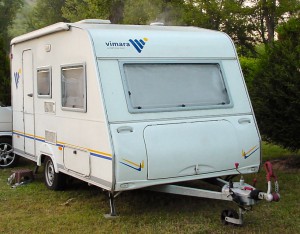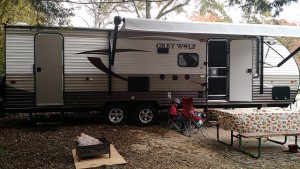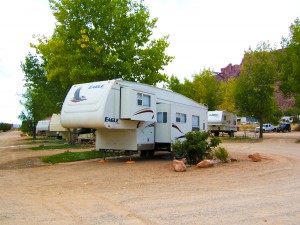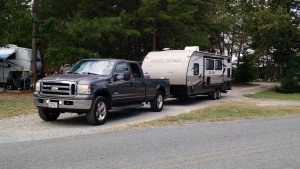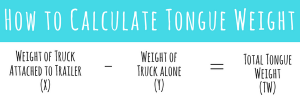Are you shopping to purchase a travel trailer (AKA bumper pull)?
If you are like most shoppers, you are most likely focused on price, size, and layout of your RV. All of these things are important, but what most future RVers do not know about, is the type of travel trailer hitch that is needed to safely tow that RV home.
Let’s discuss what you need to know in order to safely tow your travel trailer.
First things first – Definitions.
We won’t get very far without knowing the right towing lingo. I’ll go into more detail about all of these later in the post.
Receiver Hitches attach directly to the towing vehicle and has a rear facing opening where a removable ball hitch is connected. They come in five classes.
Photo By: Christopher Ziemnowicz
Removable Ball Hitch (AKA ball mount) is a platform that fits into the rear facing opening of a receiver hitch. It secures with a hitch pin clip. They come in five classes.
Hitch Pin and Pin Clip secures the removable ball hitch to the receiver hitch.
Hitch Ball attaches to the removable ball hitch or ball mount. It provides the attachment point for your trailer’s coupler and allows the trailer to pivot while towing. Sway Bars (AKA anti-sway bar, Sway control) are devices that help control sway from cross winds. Weight Distribution Hitch uses multiple points of the RV to distribute the weight. It puts equal weight onto the axles. It also takes pressure from the ball hitch and allows you to tow the maximum capacity allowed by your hitch.
Tongue Weight is the downward force that the tongue of the trailer exerts on the hitch that is connected to the tow vehicle.
Now that you know the language, let’s get into it!
You might be thinking, Jessica, can’t you just tell me what I need to tow my travel trailer?
I could tell you everything you need to know, but that would take an entire book. So I’m going to share with you the absolute basic setup you need and then recommend the best and safest travel trailer hitch set up.
Up First – The Bare Minimum Travel Trailer Hitch Setup:
At a minimum, you will need a receiver hitch, removable ball hitch, hitch ball, and hitch pin, and pin clip. This will allow you to get your RV from point A to point B.
The class of receiver hitch and ball mount will depend on the size of your trailer; typically a Class III or Class IV unless you’re towing light or really heavy loads.
- Class I –
- Usually for bikes, kayaks, and other light loads.
- Up to 2,000 lbs GTW (gross towing weight)
- Up to 200 lbs TW (tongue weight)
By Thomas R Machnitzki – Own work, CC BY 3.0
- Class II –
- Typically for pop-ups and small boats.
- Up to 3,500 lbs GTW
- Up to 525 lbs TW
By Korey99 – Own work, CC BY-SA 3.0
- Class III –
- Commonly used for towing mid-sized travel trailers, boats, etc.
- Up to 8,000 lbs GTW
- Up to 800 lbs TW
- Class IV –
- Most often used for larger travel trailers, large boats, etc.
- Up to 12,000 lbs GTW
- Up to 1,200 lbs TW
- Class V –
- Typical loads include large fifth wheels and other large trailers.
- Up to 20,000 lbs GTW
- Up to 2,000 lbs TW
By Flickr: j2davis2005 – CC BY 2.0
This bare minimum set up will be a very unsatisfactory, if not dangerous experience because there is no way to prevent your trailer from swaying side to side from winds and other dangers with only a basic trailer hitch.
So if I were you, I would keep reading!
Are you ready for the ideal travel trailer hitch set up?
Here goes!!
In addition to the basic travel trailer hitch components, you will also need weight distribution and sway control.
So why is Weight Distribution so Important?
Reduce tow vehicle sag:
- When the nose of the truck/SUV is high and the bumper is low while attached to travel trailer. This happens because the RVs tongue weight is transferred to the rear of the tow vehicle.
Improve steering and stopping
- By reducing the tow vehicle sag, you gain better control over steering and stopping.
A Weight Distributing Hitch System is composed of four major elements:
1) The Hitch Receiver
2) The Weight Distribution Kit
- Weight Distribution Shank (allows for adjusting hitch height)
- Weight Distribution Head (allows for adjusting spring bars to be level or just below level with trailer frame)
- Sway Control Brackets (Not always included. Keeps spring bars in place)
- Spring Bars (holds trailer in line)
- Snap-up Lever (eases installation)
- Spacer Rivet and Washers (allows desired tilt to be achieved)
- Hitch Pin and Clip
3) The Hitch Ball
4) The Sway Control (Not always included. I talk more about it below)
How do you actually determine tongue weight to get the correct weight distribution hitch?
1) Calculate the tongue weight of your trailer. Don’t worry the math portion isn’t too bad here.
2) Approximate the vehicle cargo load (Weight of Truck + Passengers + Baggage + Items in truck bed)
3) Add up these weights and match them up to a hitch with the proper capacity.
Sway Control
A sway control system reduces or completely eliminates sway or fishtailing, forces that can lead to tipping over or separation of the trailer from the tow vehicle.
Sway Control Systems that Reduce Sway
Independent friction-style (or bar-style) sway control attaches to both the weight distribution system and trailer frame. It supplies tension to keep the trailer in line. The friction comes from friction pads inside the unit.
Dependent, 2-Point Sway Control is built into the weight distribution system. It creates enough resistance to force the trailer to remain in line by relying on the downward force of the spring bars to apply frictional resistance to the brackets on both sides.
Sway Control Systems that Prevent Sway
Dual-Cam Sway Control uses unique sliding devices (called cams) to suspend spring bars.
4-Point Sway Control systems are built into a weight distribution system. This type of system relies on a secure connection within the head where the spring bars are held tightly in place. They also provide friction and resistance to force the trailer in line.

OK, did I lose you?
I know that was a lot of information, but keeping you safe while towing is not as simple as putting the ball-thingy into the round-thingy.
Being well informed and doing your research will ensure a safe and stress-free (well, mostly stress-free) towing experience.
Do you have any questions or anything you would add? Let us know in the comments.


